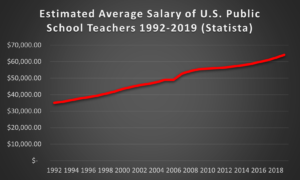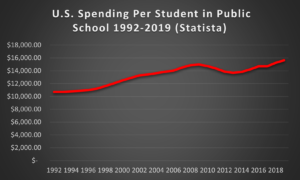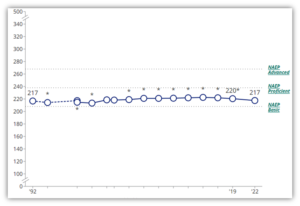The Ugly Truth about Reading Instruction
Sometimes, the truth is “ugly,” meaning unpleasant. Unfortunately, we’re not always receptive to an ugly truth. Acceptance takes time. You know, it takes a while to accept a truth that we wish was a lie. Unfortunately, the longer it takes for us to acknowledge the ugliness, the more damage is done.
This is where we are in the reading instruction of our children.
How ugly is the truth about reading instruction?
Are the scores down? Yes! How down are they? Down down! In fact, here’s the summary from the 2022 NAEP Reading Assessment:
“In 2022, the average reading score at both fourth and eighth grade decreased by 3 points compared to 2019. At fourth grade, the average reading score was lower than all previous assessment years going back to 2005 and was not significantly different in comparison to 1992. At eighth grade, the average reading score was lower compared to all previous assessment years going back to 1998 and was not significantly different compared to 1992. In 2022, fourth- and eighth-grade reading scores declined for most states/jurisdictions compared to 2019. Average scores are reported on NAEP reading scales at grades 4 and 8 that range from 0 to 500.”
Let me translate for you: After 30 years of talking, teaching, spending, and testing to improve reading scores, the increase is nil—0. In fact, it’s worse than that. The last reading assessment for grade 12 was done in 2019. The average score for a twelfth grade student in 2019 was seven points lower than in 1992.
increase is nil—0. In fact, it’s worse than that. The last reading assessment for grade 12 was done in 2019. The average score for a twelfth grade student in 2019 was seven points lower than in 1992.
And yet, teacher salaries and spending per student continue to rise. These charts demonstrate our financial commitment to students and teachers  (though, no doubt, there are those who think it’s tragically insufficient). You can see that student spending and teacher salaries have enjoyed congruent increases for the past 30 years. However, none of this investment has produced a similar steady increase in student reading performance; that chart is, for the most part, a flat line.
(though, no doubt, there are those who think it’s tragically insufficient). You can see that student spending and teacher salaries have enjoyed congruent increases for the past 30 years. However, none of this investment has produced a similar steady increase in student reading performance; that chart is, for the most part, a flat line. 
Why haven’t we addressed the ugliness?
After decades, you would think someone would notice—administrators, bureaucrats, parents! You would think someone would care and try to figure it out. Is it really so hard to teach our children the most basic language skill after speaking?
Well, who benefits from these results? We know for sure that it’s not the parents, and it certainly not the students. No caring parent would allow a swimming teacher to paid and praised for not teaching their child to swim. Why, then, can our elementary school teachers “skate” on teaching our children to read? Why don’t our middle school teachers say something to someone as they poor readers on to high school? And so on.
Of course, there’s a lot of money thrown at the problem, new books, extra teachers, new programs, but the solution is too simple and unacceptable to the public-school establishment to be enacted.
Oh, just follow the science!
The science of reading has been clear for some time. If you aren’t familiar with it, you’ll find a basic explanation here. However, the public school system has been ignoring it—until now—in, of all places, Mississippi.
Let me be quick to say that I love the South, but, if you follow education at all, you know that Mississippi hasn’t had a sterling record in teaching anything. They are perennially at the bottom of the state rankings in education. However, that is changing. In fact, it’s a “Mississippi miracle.” Even better, they are not alone; reading scores are also improving in Louisiana and Alabama.
According to an Associated Press story in U.S. News this past May, “Mississippi, Alabama and Louisiana have seen a promising turn around in their student reading scores after passing a series of similar literacy reforms.” Mississippi was just one place up from the bottom of the state rankings if fourth-grade reading in 2013. However, the results from the 2022 assessment put their fourth-grades in 21st place.
Just in case you’re not impressed with that rise, bear in mind that there was a pandemic during this period that caused “massive learning setbacks in most other states.” Only Mississippi, Louisiana, and Alabama enjoyed gains during the pandemic, according to the AP piece.
So, now what?
As it happens, Mississippi got luck in 2000, when Jim and Sally Barksdale established the Barksdale Reading Institute to improve the quality of reading instruction in Mississippi. It appears they are succeeding.
Now, the news from Mississippi is spreading, and a some states are passing “science of reading laws.” According to EdWeek in a May update, “the ‘science of reading’ movement is sweeping through state legislatures.” Many state officials have contacted BRI. The institute’s CEO, Kelly Butler, said she tells them there’s no secret to the strategy. “We know how to teach reading,” she said. “We just have to do it everywhere.”
With the help of BRI and Mississippi, maybe we can make reading instruction beautiful again.

